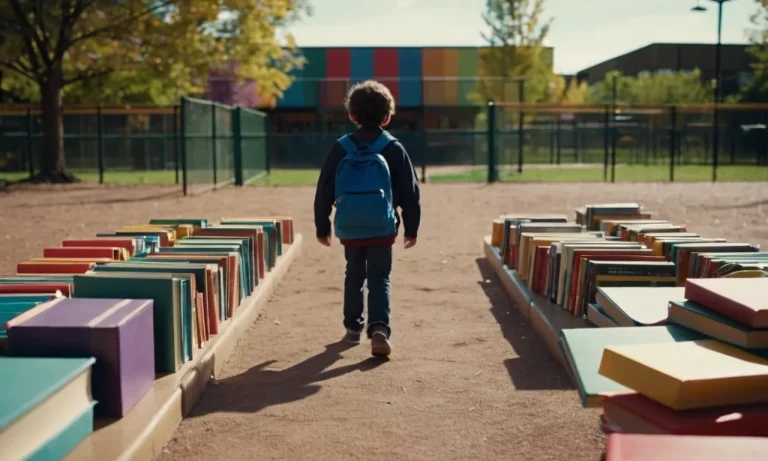Navigating the intricate world of education often leaves parents and students alike pondering a seemingly simple yet crucial question: How many hours are in a school day? This query, while straightforward, holds profound implications for understanding the structure and demands of the academic journey.
If you’re short on time, here’s a quick answer to your question: The typical school day in the United States lasts between 6 and 7 hours, with variations based on factors such as grade level, district policies, and state regulations.
In this comprehensive guide, we will delve into the nuances of school day duration, exploring the factors that influence it, the rationale behind the established norms, and the potential impact on student learning and well-being.
From examining the historical context to analyzing the ongoing debates surrounding school hours, this article aims to provide a holistic understanding of this pivotal aspect of the educational landscape.
Historical Context: The Evolution of School Hours
Early Origins of Formal Education
The concept of formal education can be traced back to ancient civilizations, where the wealthy and privileged classes sought to impart knowledge and skills to their offspring. In ancient Greece, for instance, philosophers like Socrates and Plato established schools and academies, laying the foundations for structured learning.
However, these early educational institutions catered to a select few, and the duration of instruction was largely dependent on the individual’s circumstances and the teacher’s availability.
The Industrial Revolution’s Impact on School Schedules
The advent of the Industrial Revolution in the 18th and 19th centuries brought about a significant shift in the way society viewed education. As factories and industries emerged, there was a growing need for a skilled and literate workforce.
This led to the establishment of public schools, which aimed to provide a standardized education to children from various socioeconomic backgrounds. According to Britannica, the length of the school day was heavily influenced by the demands of the industrial era, with classes often held in double shifts to accommodate the large influx of students.
Adapting to Societal Changes and Needs
Over time, the duration of the school day has evolved to reflect societal changes and educational philosophies. In the early 20th century, progressive education movements advocated for a more comprehensive and well-rounded approach to learning, leading to the incorporation of extracurricular activities and longer school hours.
Today, the length of the school day varies across countries and regions, with some nations adopting longer school days to enhance academic performance and provide additional support for students. For example, according to Education Week, in China, the average school day lasts around 8-9 hours, with a significant portion dedicated to extracurricular activities and homework assistance.
As societies continue to evolve, the debate surrounding the optimal length of the school day remains ongoing. Factors such as academic achievement, student well-being, and societal demands play a crucial role in shaping the structure and duration of the school day.
Ultimately, striking a balance between providing a comprehensive education and ensuring the overall well-being of students remains a key challenge for educators and policymakers alike.
Factors Influencing School Day Duration
The duration of a school day can vary significantly depending on several factors. These factors play a crucial role in determining the length of time students spend in school, shaping their academic journey and overall experience.
Let’s delve into the key considerations that influence the duration of a school day.
Grade Level Considerations
One of the primary factors influencing school day length is the grade level. Generally, younger students in elementary schools tend to have shorter school days compared to their older counterparts in middle and high schools.
This gradual increase in school day duration aligns with the developmental needs and attention spans of students at different ages. According to the National Center for Education Statistics, the average length of a school day for elementary schools is around 6.7 hours, while for secondary schools, it’s approximately 6.8 hours.
State and District Policies
School day duration is often dictated by state and district policies. Each state and school district may have specific requirements or guidelines regarding the minimum number of instructional hours or days per academic year.
These policies are designed to ensure that students receive a comprehensive education and meet the necessary academic standards. For instance, the Education Commission of the States provides a comprehensive overview of instructional time policies across the United States, highlighting the variations among different states.
Extracurricular Activities and After-School Programs
Many schools offer a wide range of extracurricular activities and after-school programs, which can significantly extend the time students spend on campus. These activities may include sports, clubs, tutoring sessions, or enrichment programs.
While not part of the core academic day, these opportunities provide students with valuable experiences and skills that complement their education. According to a study by the National Association of Elementary School Principals, approximately 80% of elementary schools offer some form of after-school programs, with an average duration of 3 hours per day.
Transportation Logistics
The availability and logistics of student transportation can also influence the length of the school day. Schools often stagger start and end times to accommodate bus schedules and minimize traffic congestion. This can result in variations in school day duration, even within the same district.
A report by the Economic Policy Institute revealed that students who rely on public transportation or have longer commutes may have shorter school days to accommodate travel times.
It’s important to note that the factors mentioned above are not exhaustive, and other considerations such as school resources, budget constraints, and community preferences can also play a role in determining the duration of a school day.
Ultimately, the goal is to strike a balance between providing sufficient instructional time and accommodating the diverse needs of students, families, and communities.
The Rationale Behind Current School Hours
The determination of school hours is a delicate balancing act, aimed at fostering academic excellence while prioritizing the overall well-being of students. The current structure of school schedules is the result of careful consideration and research, taking into account various factors that shape the learning experience.
Balancing Academic Rigor and Student Well-being
One of the primary objectives behind the current school hours is to strike a harmonious balance between academic rigor and student well-being. Numerous studies, such as those conducted by the Centers for Disease Control and Prevention (CDC), have highlighted the importance of adequate sleep for adolescents.
Insufficient sleep can lead to a range of negative consequences, including decreased cognitive function, impaired academic performance, and increased risk of physical and mental health issues. By aligning school hours with natural sleep patterns, educators aim to ensure that students are well-rested and better equipped to engage in learning activities.
Accommodating Diverse Learning Styles
Students have varying learning preferences and styles, and the current school hours strive to accommodate this diversity. Some students thrive in the morning, while others perform better later in the day.
By offering a range of class schedules throughout the day, schools can cater to these individual differences, enhancing the overall learning experience. Additionally, extracurricular activities and after-school programs provide opportunities for students to explore their interests, develop new skills, and engage in physical activities, promoting a well-rounded educational experience.
Aligning with Parental Work Schedules
The current school hours also take into consideration the work schedules of parents and guardians. With many families relying on dual incomes or single-parent households, aligning school hours with typical work schedules is crucial for ensuring proper supervision and support for students.
This alignment allows parents to drop off and pick up their children without significant disruptions to their professional commitments. Furthermore, it enables parents to be more involved in their children’s education, attending meetings, conferences, and school events more conveniently.
While the determination of school hours is a complex process, involving various stakeholders and factors, the underlying rationale is to create an environment that nurtures academic growth, promotes student well-being, and aligns with the realities of modern family life.
By continuously evaluating and refining school schedules, educators and policymakers strive to provide an optimal learning experience for students, empowering them to reach their full potential.
Ongoing Debates and Potential Reforms
Calls for Longer or Shorter School Days
The debate over the optimal length of the school day has been ongoing for years, with proponents on both sides making compelling arguments. Some educators and policymakers argue that longer school days are necessary to provide students with more instructional time, allowing for a deeper exploration of subjects and increased opportunities for enrichment activities.
According to a report by Education Week, extending the school day by just one hour could result in an additional 180 hours of instruction per year. 😮 Conversely, others contend that shorter school days can lead to improved student focus and engagement, as well as better work-life balance for teachers and families.
Exploring Alternative Schedules
As the conversation around school day length continues, some districts are exploring alternative scheduling models that could better accommodate the diverse needs of students and families. One such approach is the flexible modular schedule, which allows for varying class lengths and a more personalized learning experience.
👏 Another option is the year-round school calendar, which distributes instructional time more evenly throughout the year and reduces the need for lengthy summer breaks. According to the National Center for Education Statistics, as of 2019, approximately 3% of public schools in the United States followed a year-round calendar.
The Impact of Technology on Learning Time
As technology continues to evolve, it is also shaping the way we think about learning time and the school day. Online learning platforms and virtual classrooms have made it possible for students to access educational content and resources beyond the traditional school day, potentially reducing the need for extended on-site hours.
💻 However, concerns have been raised about the digital divide and ensuring equitable access to these technologies for all students. Furthermore, the COVID-19 pandemic has highlighted the importance of finding the right balance between in-person and remote learning, as well as the need for flexibility in scheduling to accommodate different learning modalities.
Ultimately, the debate over school day length and scheduling is complex, with no one-size-fits-all solution. Policymakers, educators, and communities will need to carefully consider the unique needs and circumstances of their students, as well as the latest research and best practices, to determine the most effective approach.
What’s your take on this issue? 🤔 Let us know in the comments below!
Conclusion
As we navigate the complexities of the educational landscape, understanding the nuances of school day duration becomes paramount. This comprehensive guide has explored the historical context, the factors influencing school hours, the rationale behind current practices, and the ongoing debates surrounding potential reforms.
While the typical school day in the United States lasts between 6 and 7 hours, this duration is not set in stone. It is a dynamic aspect of the educational system, shaped by societal needs, pedagogical considerations, and the ever-evolving nature of learning itself.
As we continue to prioritize student well-being and academic excellence, the discussion surrounding school hours will undoubtedly persist, paving the way for innovative solutions that cater to the diverse needs of learners in the 21st century.






